Learn how to make a tunnel book from card
Cardboard frames can be layered to create impressive 3D scenes.
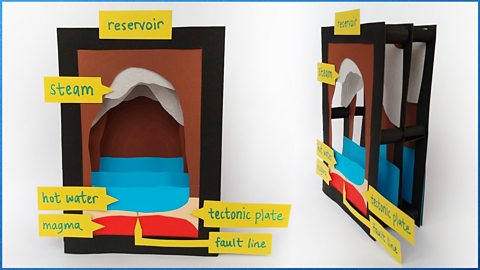


- Card *
- Pencil
- Putty
- Scissors
- PVA glue
- (Choose the thickest card that you can cut easily. This will help build a strong frame)
You might also need a rubber for any mistakes and a glue stick when you stick your decorations to the frames (PVA glue will work but might warp paper or thin card).

First: Plan your picture
What do you want your picture to look like? It can help to create a quick sketch to plan it out:
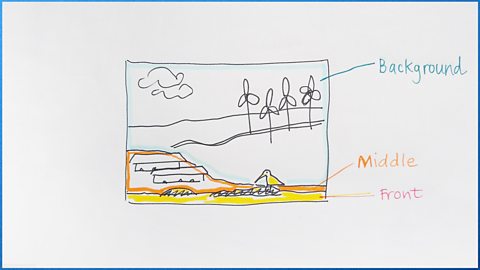
Looking at your sketch will help you to separate the different bits of your drawing up into frames.
You will need a background that shows the furthest away parts of the picture. This needs to fill the frame.
The front frame is the foreground and shows objects that are closest to you.
Add one or more frame in the middle depending on how deep and layered you want the picture to be.
Make sure objects in the foreground and middle are next to the frame, otherwise they won't have anything to stick to.

Then: Make frames
Choose your card and make the number of frames you need for your design. The frames should be identical in size.
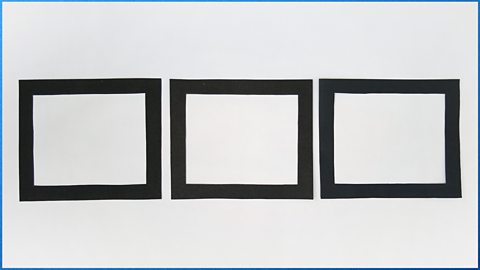
For more help with making angular frames check out our cutting holes articles:
Cutting folded paper is the simpler way.
Cutting to the corners is the neater way.

Next: Make spacers
Spacers join the frames together while creating space between them. This increases the 3D effect.

Image caption, Mark and cut a length of card
It is important that the strip has the same height throughout. You can use a ruler to mark it out.
Image caption, Snip along the card to create roughly equal strips
Each one of these is going to be a spacer.
Image caption, Roll each strip up into a cylinder
Don't worry if they spring back a little bit at this stage.
Image caption, Put glue on the inside of the rolled up strip
Glue stick is good for this job as it dries quickly. If you are in a hurry you can use sticky tape.
Image caption, Roll it back up and hold it for a few seconds to help it stick together
Image caption, Continue making spacers until you have enough of them for your frames
You will need one spacer per corner and for the middle of longer sides. Each frame needs spacers, apart from the front frame.
1 of 6
After that: Decorate your frames

Image caption, Make the picture sections for each of your frames
You can layer them and move things around to make sure you like the way the picture will look when framed.
Image caption, Make sure each section is the right size for the frame
Each section will need to connect to its frame.
Image caption, Put glue on the frame
Image caption, Flip the frame over and gently place it over the section
If you are happy with the way it looks press down firmly so they stick together.
Image caption, Glue the rest of your picture sections to their frames
Now you are ready to join the frames together!
1 of 5
Finally: Join the frames
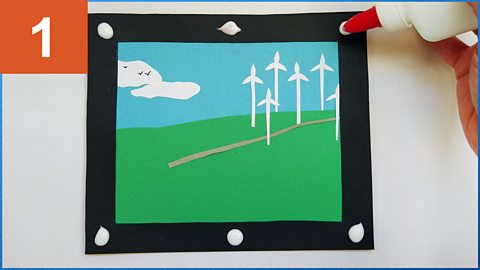
Image caption, Put PVA glue on each corner and the long sides of your back frame
Image caption, Put a spacer onto each blob of glue
Image caption, Repeat on each frame apart from the front frame and then leave to dry
Remember that the front frame doesn't need spacers!
Image caption, Put PVA glue on the top of all the spacers
Image caption, Carefully stack the frames on top of each other
Be gentle and make sure you stack them in the right order!
Image caption, Finish by putting the front frame on top
Press down gently over each spacer and then leave the stack to fully dry.
Image caption, Once the glue has dried, flip the layered frame onto its side... Finished!
1 of 7
Artwork examples
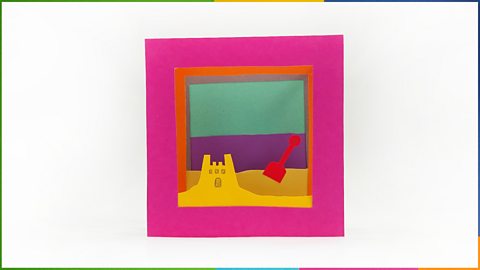
Image caption, You can also use frames of different colours in a tunnel book.
Image caption, You can also use frames of different colours in a tunnel book.
1 of 2

Image caption, If you don't know what to make, experiment with different shapes and see what you can turn them into.
Image caption, If you don't know what to make, experiment with different shapes and see what you can turn them into.
1 of 2
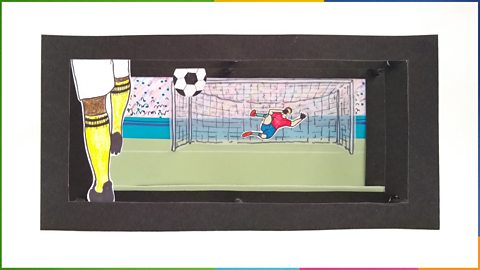
Image caption, In this tunnel book the footballer's legs are on the front frame, the football on the middle frame and the goalie and crowd on the back frame. The goalie is much smaller than the legs and ball because he is in the background.
Image caption, In this tunnel book the footballer's legs are on the front frame, the football on the middle frame and the goalie and crowd on the back frame. The goalie is much smaller than the legs and ball because he is in the background.
1 of 2
More on Design activity
Find out more by working through a topic
- count1 of 11

- count2 of 11
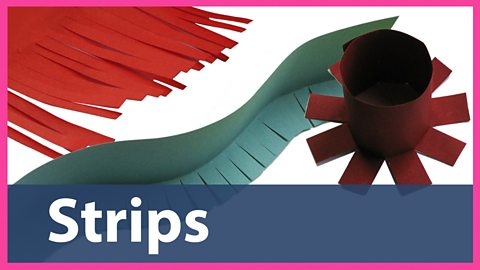
- count3 of 11
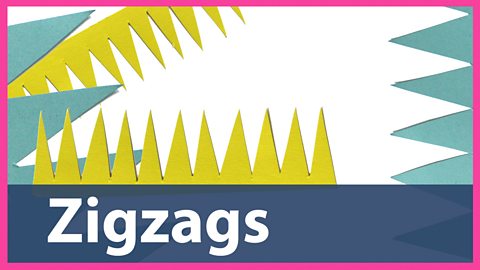
- count4 of 11
